ABOUT
Because when New Orleans needs it most, we always rise above.
Every Drop Makes a Difference is an initiative of the Greater New Orleans Foundation, the City of New Orleans and the Sewerage and Water Board of New Orleans to partner with residents on managing water in our neighborhoods. It is a forum for shared ideas, tools, and resources to help us prepare for a brighter, drier future.
WHY WE FLOOD
Everybody knows the Crescent City is shaped more like a bowl (we’re below sea level), and when it rains, it holds the water. Because there’s so much concrete, that water can’t go down into the ground. Instead, it flows to the drainage system where it’s pumped out.
Based on data, we are seeing more intense rainstorms in our region. Did you know that during heavy rain, literally billions of gallons of water can dump on our neighborhoods? That’s right…billions…as in five Superdomes full of water during a single storm! And science says it’s going to rain more and more. All that rainwater has to go somewhere, and when the pumps can’t keep up, it floods.
Simply put, in addition to pumping, we have to better manage water and where it goes.
And Every Drop Makes a Difference.


Rain, Rain, Here to Stay
We live in the third rainiest city in the country. We are seeing more intense rainstorms in our region due to climate change. And because New Orleans is on very low ground, and full of concrete, every rain event (and there are many of them) is like pouring water into a bowl. Without many green spaces to absorb the water into the ground, the city has to pump the water out — but that’s nowhere near enough.
In the last 20 years, New Orleans has seen 42 flood events. And there will be more. It’s a fact of New Orleans life and one that must be prepared for.

Old Drainage System, New Solutions
The fact is, they do. But the pumps can only move so much water. When a lot of rain falls at once, the ground soaks up as much as it can and the canals fill up, but the pumps cannot always keep up to keep water from pooling as the rain keeps coming.
About half the City’s drainage pumps are originals. They were built during the early 1900s, during the first years of our drainage system’s construction. They still work today, and alongside our more modern pumps, they can move vast amounts of water - enough to fill the Superdome every 40 minutes or so. But rain storms today often drop more water than that in a shorter period of time. That’s when it floods.
WHAT'S BEING DONE
A COMMUNITY-WIDE EFFORT
Public projects across the city are spearheading our water mitigation efforts and making visible inroads on a number of fronts while community projects are addressing our city’s stormwater management challenges from the grassroots level up.
Local nonprofits are partnering with residents and businesses to turn urban water challenges into urban water solutions. Some of these non-profits are supported through the Greater New Orleans Foundation’s Environmental Fund and Disaster Response and Restoration Fund, including those below. Other non-profits and companies involved in this work can be found in the Resources Page.
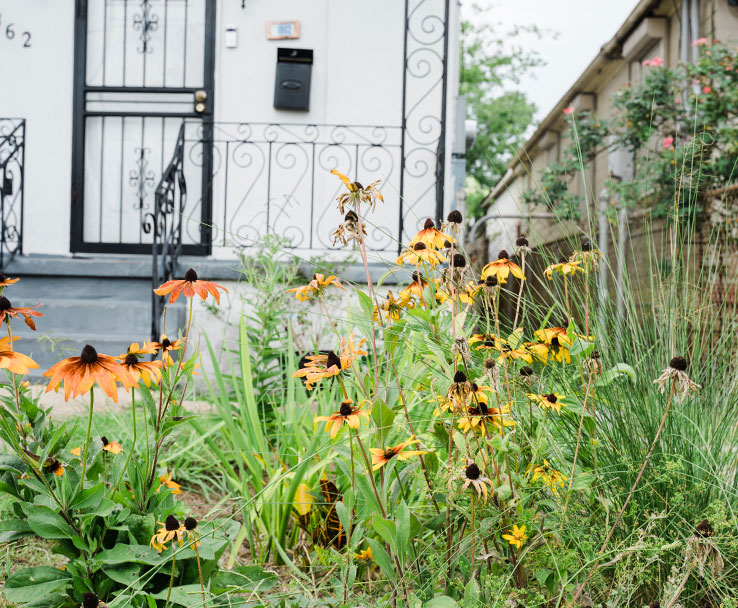
Green Block
Healthy Community Services
Green Block
1800 block of Duels Street
 Like a lot of streets in New Orleans, Duels St. flooded almost every time it rained. So neighbors took action, installing green infrastructure like permeable pavement and rain gardens. These improvements are holding rainwater so that it doesn't back up in the drainage system and pool in their neighborhood. Storage capacity of all the green infrastructure in the Green Block is 2,880.
Like a lot of streets in New Orleans, Duels St. flooded almost every time it rained. So neighbors took action, installing green infrastructure like permeable pavement and rain gardens. These improvements are holding rainwater so that it doesn't back up in the drainage system and pool in their neighborhood. Storage capacity of all the green infrastructure in the Green Block is 2,880.
Learn more
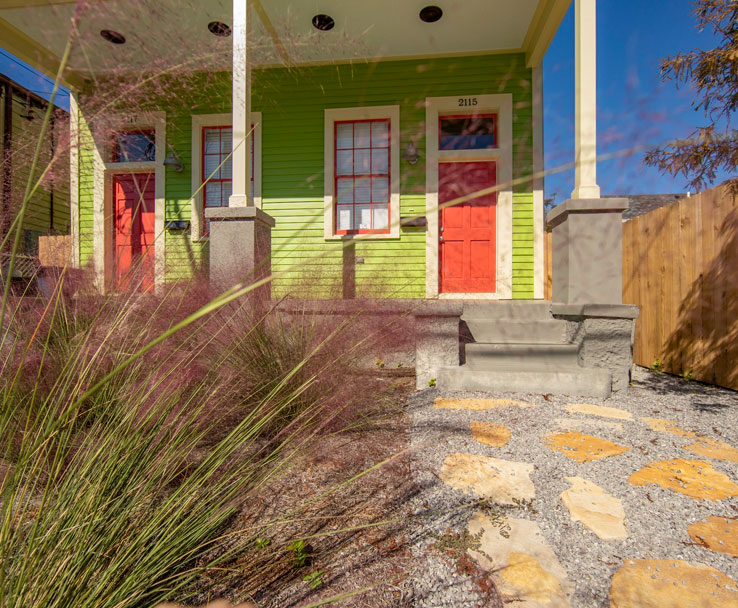
Front Yard Initiative
Urban Conservancy
Front Yard Initiative
 With so much concrete in our neighborhoods, rainwater doesn’t have anywhere to go but into the drainage system, and the pumps can’t keep up during a heavy rain. So residents can help by removing concrete on their properties to help the water flow into the ground instead. Replacing concrete with permeable pavers, gravel, plants, and mulch is a great way to help reduce flooding in your neighborhood.
With so much concrete in our neighborhoods, rainwater doesn’t have anywhere to go but into the drainage system, and the pumps can’t keep up during a heavy rain. So residents can help by removing concrete on their properties to help the water flow into the ground instead. Replacing concrete with permeable pavers, gravel, plants, and mulch is a great way to help reduce flooding in your neighborhood.Find out if you're eligible to receive incentives for removing concrete.
Learn more
WHAT YOU CAN DO
DON’T JUST GO WITH THE FLOW, JOIN THE MOVEMENT




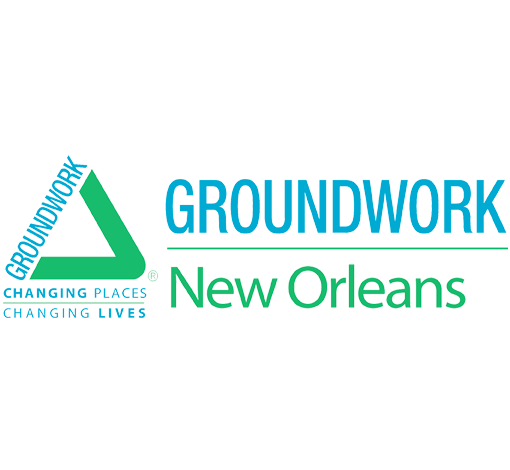




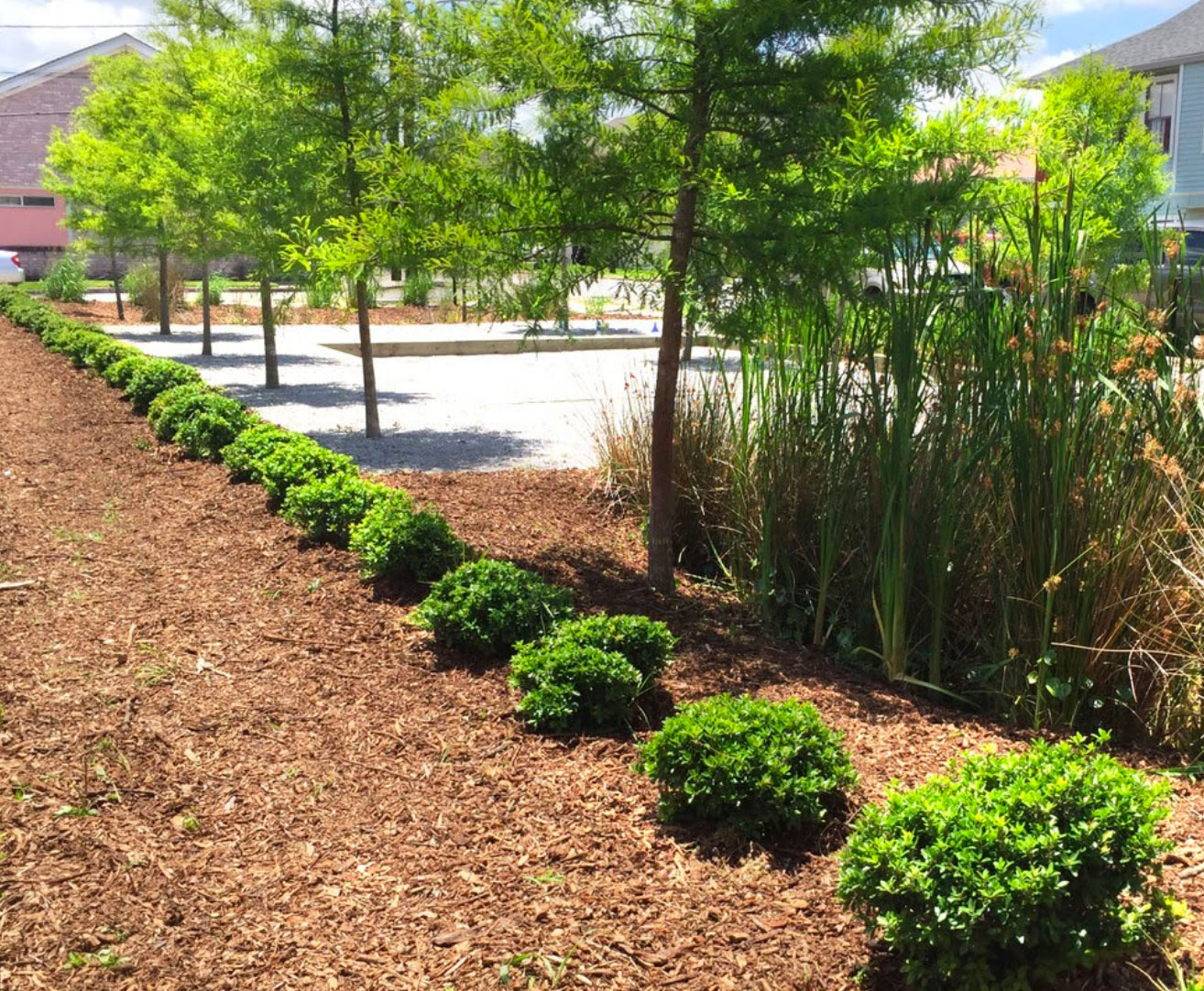
 A couple of hundred years ago, Broadmor used to be a lake! And today, as one of the lowest neighborhoods in the city, it floods more often than others. This green infrastructure project uses rain gardens and dry ponds to collect rainwater so that it doesn't flow into the drainage system. In addition to being a beautiful addition to the neighborhood, this Sewerage and Water Board project is helping reduce flooding.
A couple of hundred years ago, Broadmor used to be a lake! And today, as one of the lowest neighborhoods in the city, it floods more often than others. This green infrastructure project uses rain gardens and dry ponds to collect rainwater so that it doesn't flow into the drainage system. In addition to being a beautiful addition to the neighborhood, this Sewerage and Water Board project is helping reduce flooding.

 Concrete stops water from being able to soak into the ground. So where's it go? Straight into our drainage system. And when it rains a lot, the pumps just can't keep up. So it's better to hold that water in place. The City of New Orleans is leading the charge to remove concrete and replace it with permeable pavement - which is a surface that allows water to drain through it into the ground. The 7th Ward's Hunter’s Field is a shining example. The City installed a permeable pavement parking lot, helping keep rainwater there instead of in the neighborhood.
Concrete stops water from being able to soak into the ground. So where's it go? Straight into our drainage system. And when it rains a lot, the pumps just can't keep up. So it's better to hold that water in place. The City of New Orleans is leading the charge to remove concrete and replace it with permeable pavement - which is a surface that allows water to drain through it into the ground. The 7th Ward's Hunter’s Field is a shining example. The City installed a permeable pavement parking lot, helping keep rainwater there instead of in the neighborhood.
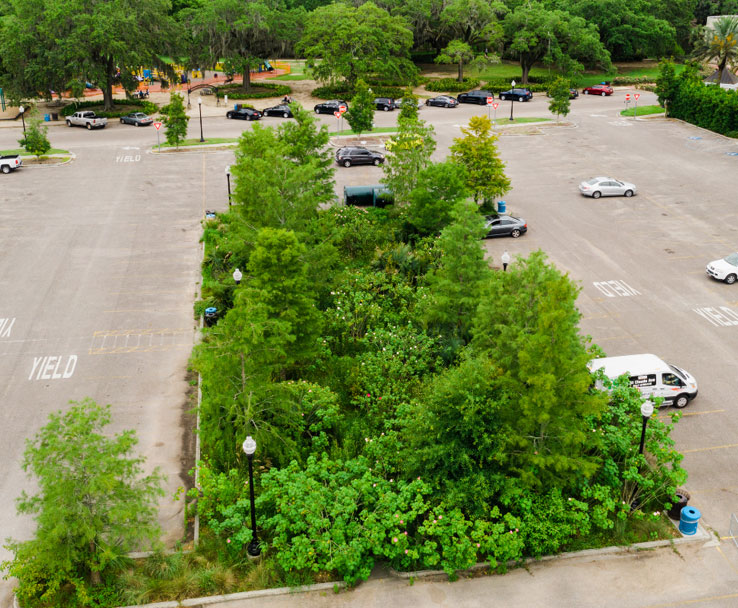
 Parking lots are large flat surfaces that don't allow the water to soak into the ground. To overcome this problem, the City of New Orleans took a new sustainable approach to stormwater management when building this large parking lot in City Park. With its unique design, all the rainwater that hits the parking lot flows into a central rain garden rather than overloading our City's drainage system.
Parking lots are large flat surfaces that don't allow the water to soak into the ground. To overcome this problem, the City of New Orleans took a new sustainable approach to stormwater management when building this large parking lot in City Park. With its unique design, all the rainwater that hits the parking lot flows into a central rain garden rather than overloading our City's drainage system.

 Some of the best places to see green infrastructure projects are at our City's libraries. Take Rosa Keller Library for example. There, the City of New Orleans created a large bioswale, or dry pond, that detains almost all rainwater, which means it doesn't add to the water in the City's drainage system during a storm.
Some of the best places to see green infrastructure projects are at our City's libraries. Take Rosa Keller Library for example. There, the City of New Orleans created a large bioswale, or dry pond, that detains almost all rainwater, which means it doesn't add to the water in the City's drainage system during a storm.

 This rain garden in the Filmore neighborhood collects, temporarily stores, and cleans up to 500 gallons of rainwater and allows it to gradually flow into the City’s drainage system. Part of the Greater New Orleans Urban Water Plan, it is a perfect example of how to live with water.
This rain garden in the Filmore neighborhood collects, temporarily stores, and cleans up to 500 gallons of rainwater and allows it to gradually flow into the City’s drainage system. Part of the Greater New Orleans Urban Water Plan, it is a perfect example of how to live with water.
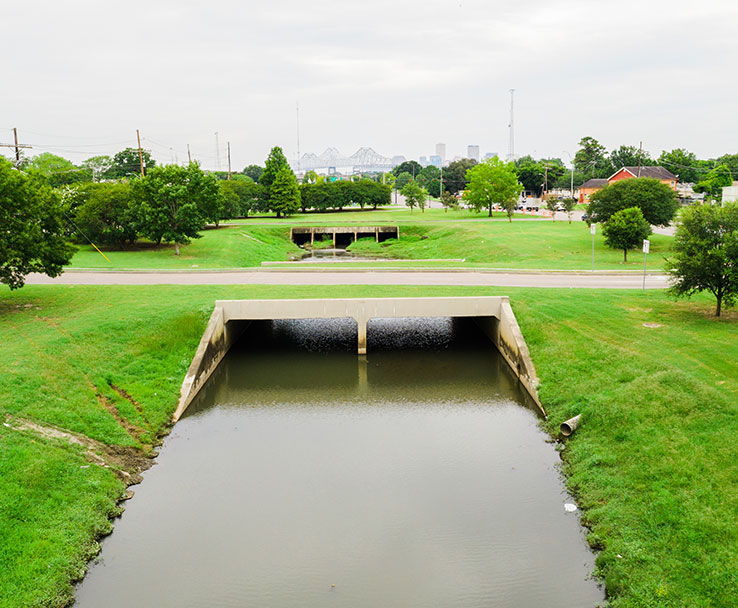
 As one part of the federally-funded SELA program, The Sewerage and Water Board improved drainage in Algiers by converting the earthen canals into larger concrete canals that are able to hold 200% more rainwater, helping to keep Westbank neighborhoods dry.
As one part of the federally-funded SELA program, The Sewerage and Water Board improved drainage in Algiers by converting the earthen canals into larger concrete canals that are able to hold 200% more rainwater, helping to keep Westbank neighborhoods dry.
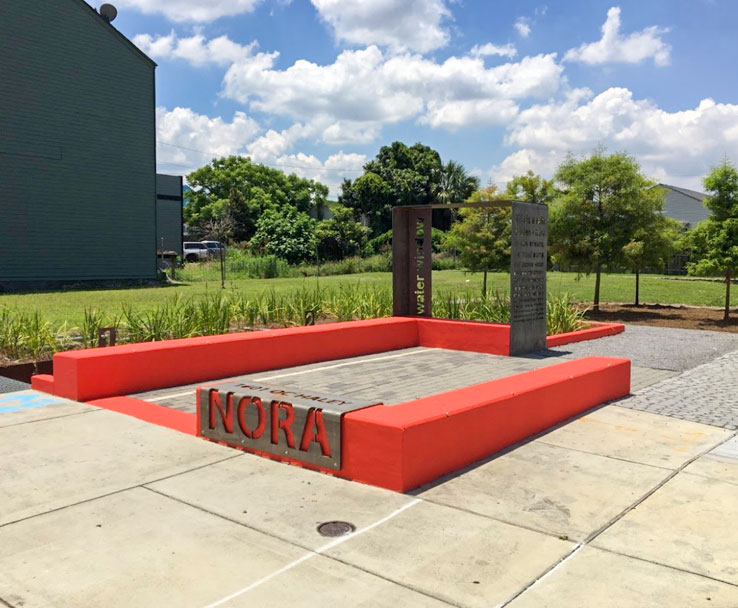
 NORA is investing in the vacant lots it manages to help reduce flooding through green infrastructure, and the project at 1601 Oretha Castle is no exception. This project manages stormwater by redirecting runoff into a forebay and energy dissipator tied to a multilevel rain garden. NORA’s stormwater management lots collectively detain up to 209,960 gallons of stormwater every time it rains!
NORA is investing in the vacant lots it manages to help reduce flooding through green infrastructure, and the project at 1601 Oretha Castle is no exception. This project manages stormwater by redirecting runoff into a forebay and energy dissipator tied to a multilevel rain garden. NORA’s stormwater management lots collectively detain up to 209,960 gallons of stormwater every time it rains!
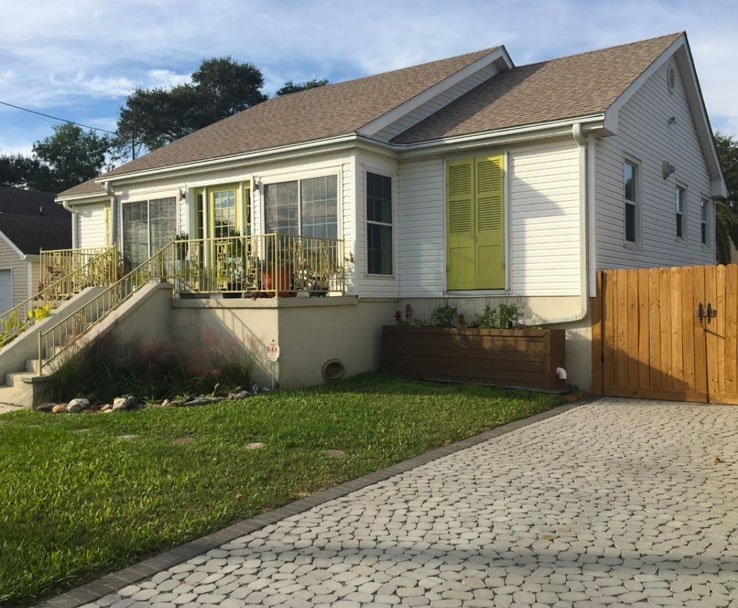
 NORA’s Community Adaptation Program provides residential stormwater management improvements to owner-occupied single family homes with household incomes at or below 80% of Area Median Income. This specific project features permeable driveway and sidewalk pavers, two stormwater planter boxes and a small rain garden to capture the stormwater runoff from the home’s gutters and downspouts. This property can hold 1,915 gallons of water total!
NORA’s Community Adaptation Program provides residential stormwater management improvements to owner-occupied single family homes with household incomes at or below 80% of Area Median Income. This specific project features permeable driveway and sidewalk pavers, two stormwater planter boxes and a small rain garden to capture the stormwater runoff from the home’s gutters and downspouts. This property can hold 1,915 gallons of water total!
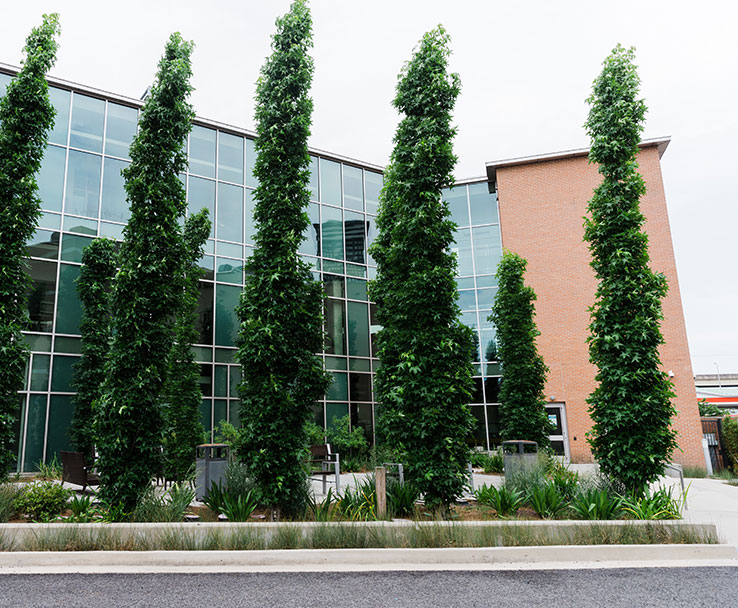
 As a leader in the movement around “living with water," when the Greater New Orleans Foundation designed its new headquarters, it thoughtfully integrated stormwater management principles within a beautiful landscape of regional native plants. Rainwater is captured from the entire roof and half is directed into a subsurface cistern, where it is stored and used for irrigation, and the other half is directed to a demonstration cistern, which overflows into a gravel trough and then flows through a series of rain gardens. The parking area is paved with porous asphalt and features islands of depressed gardens that also collect rainwater. These are exemplary features that could be mirrored across the city.
As a leader in the movement around “living with water," when the Greater New Orleans Foundation designed its new headquarters, it thoughtfully integrated stormwater management principles within a beautiful landscape of regional native plants. Rainwater is captured from the entire roof and half is directed into a subsurface cistern, where it is stored and used for irrigation, and the other half is directed to a demonstration cistern, which overflows into a gravel trough and then flows through a series of rain gardens. The parking area is paved with porous asphalt and features islands of depressed gardens that also collect rainwater. These are exemplary features that could be mirrored across the city.

 Concrete is a major contributor to flooding, because it prevents rainwater from absorbing into the ground. Instead it rushes to the drains, where the rainwater can overwhelm the system. Businesses can play a critical role by removing concrete and installing porous materials. The Ruby Slipper is leading by example with its permeable pavement parking lot.
Concrete is a major contributor to flooding, because it prevents rainwater from absorbing into the ground. Instead it rushes to the drains, where the rainwater can overwhelm the system. Businesses can play a critical role by removing concrete and installing porous materials. The Ruby Slipper is leading by example with its permeable pavement parking lot.
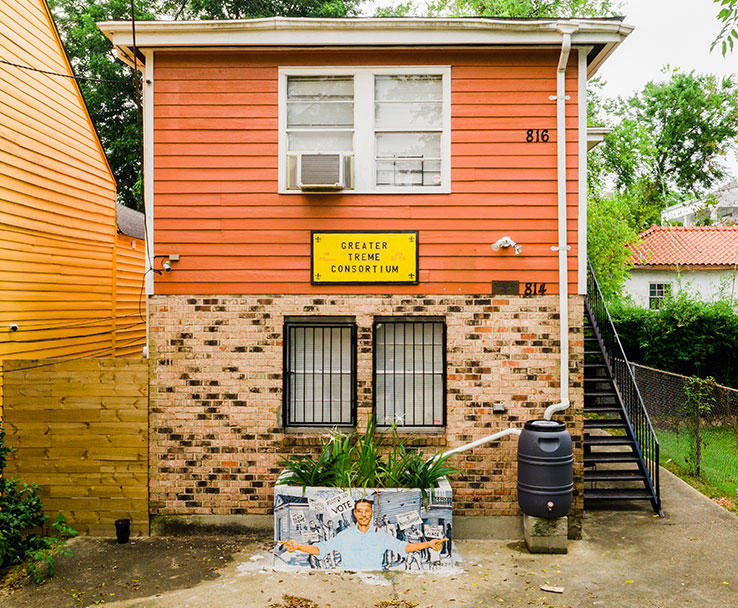
 Like a lot of places in our city, parts of Treme are below sea level and the drainage system frequently gets clogged, so it floods often when it rains. The Water Wise Tremé Initiative, a partnership between Water Wise Gulf South and the Greater Tremé Consortium, has installed dozens of stormwater management projects, like rain barrels, planter boxes, and rain gardens. In total, these projects can store up to 31,600 gallons of water.
Like a lot of places in our city, parts of Treme are below sea level and the drainage system frequently gets clogged, so it floods often when it rains. The Water Wise Tremé Initiative, a partnership between Water Wise Gulf South and the Greater Tremé Consortium, has installed dozens of stormwater management projects, like rain barrels, planter boxes, and rain gardens. In total, these projects can store up to 31,600 gallons of water.

 The Treme Recreation Community Center has taken the lead in demonstrating to their flood-prone neighborhood what can be done to help. Over 100 volunteers from Water Environment Federation built this large planter box to capture and treat nearly 10,000 gallons of rainwater from the roof by disconnecting the downspouts and allowing the water to flow into the planter box. It contains water-loving, native plants, too that help filter runoff before it enters the drains.
The Treme Recreation Community Center has taken the lead in demonstrating to their flood-prone neighborhood what can be done to help. Over 100 volunteers from Water Environment Federation built this large planter box to capture and treat nearly 10,000 gallons of rainwater from the roof by disconnecting the downspouts and allowing the water to flow into the planter box. It contains water-loving, native plants, too that help filter runoff before it enters the drains.
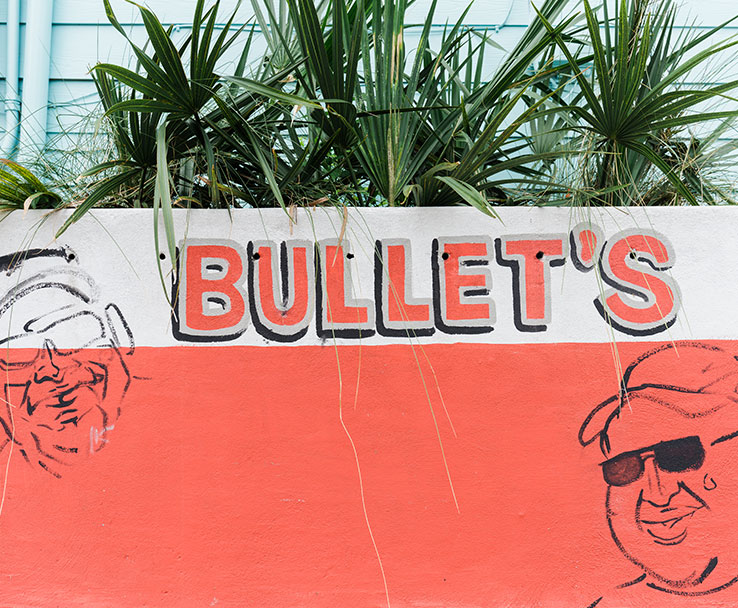
 Businesses have a major role to play in rainwater management, and Bullet’s is a prime example. They’ve installed a planter box that has a storm water capacity of 300 gallons of water per rain event and is comprised of muhly grass and dwarf saw palmetto. This planter box allows Bullet’s to hold rainwater instead of allowing it to overwhelm our city’s pumps when there’s a heavy rain.
Businesses have a major role to play in rainwater management, and Bullet’s is a prime example. They’ve installed a planter box that has a storm water capacity of 300 gallons of water per rain event and is comprised of muhly grass and dwarf saw palmetto. This planter box allows Bullet’s to hold rainwater instead of allowing it to overwhelm our city’s pumps when there’s a heavy rain.

 It was only ‘natural’ that the Louisiana Children’s museum, which focuses much of its educational exhibits on water, would incorporate water management infrastructure in its design. And, in addition to planting hundreds of native plants and over 125 trees, the site is home to a new 15,000 gallon cistern that collects rainwater and later redistributes it to several rain gardens and dry ponds. LCM is leading the way in sustainable design.
It was only ‘natural’ that the Louisiana Children’s museum, which focuses much of its educational exhibits on water, would incorporate water management infrastructure in its design. And, in addition to planting hundreds of native plants and over 125 trees, the site is home to a new 15,000 gallon cistern that collects rainwater and later redistributes it to several rain gardens and dry ponds. LCM is leading the way in sustainable design.